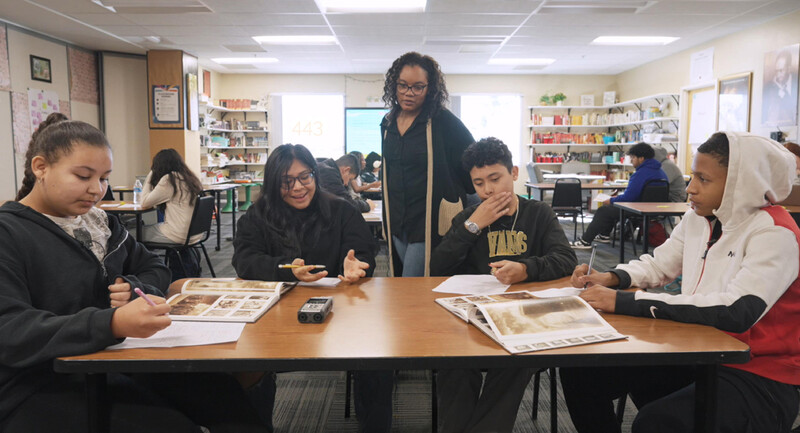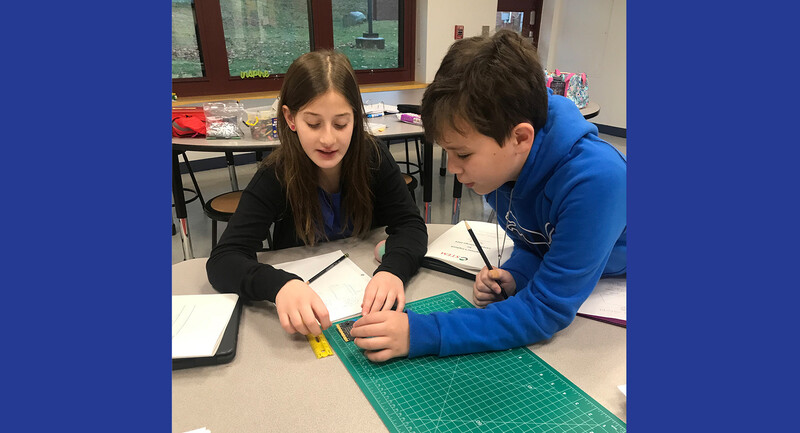“You can tell that Carlos is intelligent because he's a wonderful writer, and Linda can solve any math problem you give her. It's a shame about Ed, though. He's a superb artist but isn't very intelligent. And Lee gets along with everyone but isn't very smart.”
Unfortunately, this narrow definition of intelligence is heard too often in schools. Because we emphasize standardized test scores, we teach and reinforce success in areas that tests focus on: language and mathematics.
How we define intelligence makes a philosophical statement about what we value in education, though. From the start, Howard Gardner's Theory of Multiple Intelligences seemed a natural for our curriculum at The New City School, an independent school in St. Louis, Missouri, that has always valued student diversity, affective learning, and experiential education.
Getting Started
New City serves students from age 3 through 6th grade and has a minority enrollment of 24 percent. The faculty began work with multiple intelligences in the spring of 1989, forming a Talent Committee to read and discuss Gardner's Frames of Mind. Twelve of the 32 faculty members joined that initial effort.
Throughout the summer and fall, the Talent Committee met every three or four weeks. Teachers worked together in two-person teams, taking responsibility for presenting chapters of Gardner's book to the remainder of the committee. Each of these presentations generally included a brief lecture, a hands-on activity, and a set of discussion questions to be answered in small groups.
Four staff members who had not been part of the Talent Committee attended a conference on multiple intelligences in the spring of 1990. They returned full of enthusiasm and with ideas about how we might begin to incorporate multiple intelligences into our curriculum. These four teachers joined the Talent Committee, increasing membership to half the faculty.
Planning Themes
In planning to implement the Multiple Intelligences Theory, the Talent Committee was concerned that teachers might feel overwhelmed or that the curriculum would be disjointed. We decided to use schoolwide themes as a tool to address multiple intelligences. Some of these themes included Life Along the River and Inventions. As we soon discovered, though, schoolwide themes were a mistake.
We learned that developing the themes took an enormous amount of planning, time that could be better spent planning how to focus on multiple intelligences. We also realized that schoolwide themes meant that each year required new themes, with a similar investment of planning time. At midyear our faculty decided that grade-level teams would have the option to discontinue work with the schoolwide themes. Most teams elected to do so and to use grade-level themes such as Keepers of the Earth, Our Solar System, and Travel Back to the Future.
After much staff planning, we implemented the multiple intelligences model during the 1990–91 school year. At our back-to-school inservice, we discussed the theory in-depth and worked in teams to develop curriculum and units to address each of the seven intelligences. We opened school by studying multiple intelligences in each class and building a developmentally appropriate vocabulary of multiple intelligences terms. We also sent letters to parents explaining the theory and our rationale for adopting it.
In the Classroom
Students' experiences at New City are different because of our belief in multiple intelligences. Implementation varies by classroom, but teachers are using all seven of the intelligences in designing instruction. Sometimes looking into a classroom is a bit like looking into a beehive: the uninformed visitor might see lots of bees moving in many directions with no apparent logic, but the beekeeper knows what each bee is doing and how an activity fits within the overall pattern.
Similarly, an uninformed visitor in our classrooms might wonder about all the activity: students reading, measuring a row of beans laid on the floor, drawing, writing in a journal, talking in small groups, and inventing a dance or practicing a song. One who understands multiple intelligences would be able to identify students learning in all seven ways.
For example, a 4th grade teacher assigning book reports gives the children options corresponding to the seven intelligences. A 1st grade teacher plans a unit on shoes, designing activities that use all intelligences; she records the students' progress in each intelligence. When 5th graders design an Egyptian burial place for the front hall, the decorations and artifacts in the tomb reflect all of the intelligences. In the preschool, teachers create learning centers for each intelligence and document which centers children frequent.
Naturally, with this increased attention to different kinds of learning, we are aware that our assessment needs to change as well. A subgroup of our Talent Committee is investigating alternative forms of assessment, including the use of student portfolios and videotape. Because we know that how you measure determines what you measure, and what you measure determines what you value, we must design ways of capturing student progress in all of the intelligences. Also, we are about to redesign our report cards to better reflect multiple ways of learning. In doing this, we are investigating how we can relate the personal intelligences to our school's commitment to racial and socioeconomic diversity.
Added Benefits
The Talent Committee has divided into subgroups to examine specific areas like the personal intelligences, logical-mathematical intelligence, and how to address multiple intelligences in our before-school and extended-day programs. We meet in large groups and small groups twice each month.
Aside from the merits of our model and the educational advantages it offers our school and students, the process of reflection and discussion has been enormously beneficial to us. Our faculty is stronger because of the reflection on practice, the dialogue among staff members, and the collegiality that has resulted. Our implementation of multiple intelligences has made all of us learners, and we have all benefited. We have also reaffirmed our belief that each child has special talents and that it is our job to identify and cultivate them.







